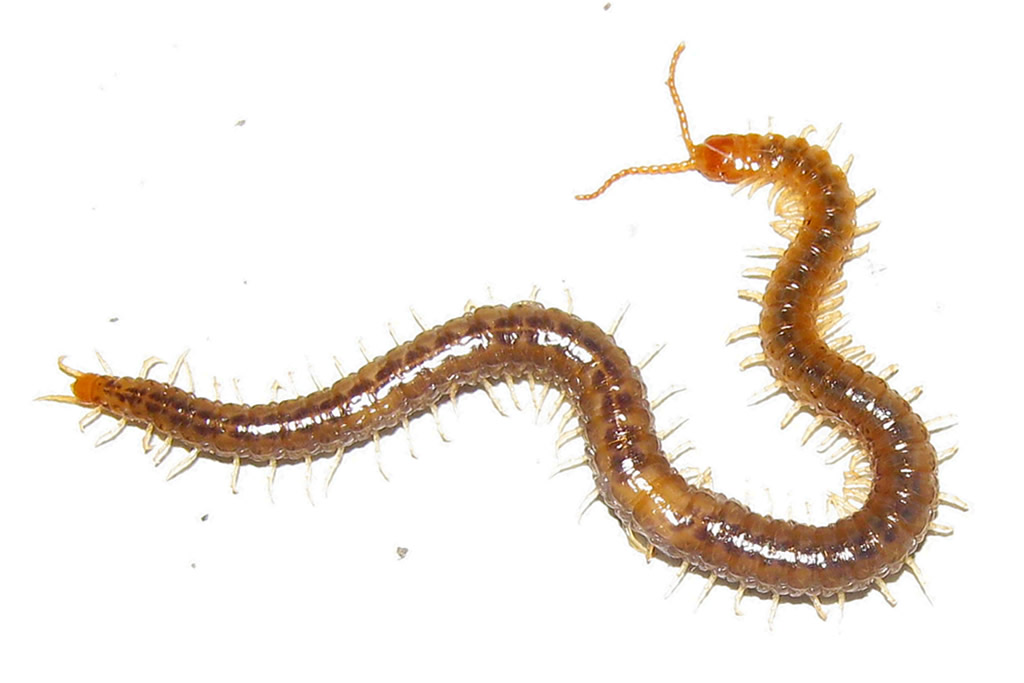Geophilus carpophagus Leach, 1816
Synonyms
- Authority previously incorrectly given as Leach (1815) - see Barber & Read (2023).
- Geophilus carpophagus 'long form' of Eason, 1964
- Geophilus carpophagus sensu stricto Leach, 1815
Status:
GB IUCN status: Least Concern
ID Difficulty
Identification
Ten species of Geophilus are known from Britain and Ireland.
Geophilus carpophagus is a large species (to 60 mm body length), with 51 to 57 leg pairs, and with the orange/tan body bearing a distinctive purplish marbled pattern giving a greyish appearance in life (also seen in Henia vesuviana, which has more than 63 leg pairs).
It has been frequently confused with G. easoni (which has fewer leg pairs and differs in habitat preferences). Both species have characteristic reddish oval carpophagus fossae on the anterior sternites. Only recently have the two been considered to be separate species (Arthur et al., 2001) and earlier records need confirmation.
A description with figures, based on UK specimens, is given by Gregory & Barber (2010).
Distribution
Geophilus carpophagus is most common across south-east England, becoming entirely coastal in the west and north (where it reaches south-east Scotland). In Ireland there is a handful of records from the south coast.
Habitat
This is a climbing species (usually occurring above ground level) that can be found (often in small groups) under loose bark on trees (such as Yew, Sycamore, Pine, etc), under loose stones on walls, and in crevices on ‘soft’ coastal cliffs. It is much easier to find at night (by torch surveys) when it is active. Away from the coast it is usually found in urban or sub-urban sites, such as gardens and churchyards, and occasionally wanders indoors. It is only rarely seen at ground level (where G. easoni occurs).
Some notes on habitat preferences of this species are given in Arthur et al. (2002).
This account is based on the 'Centipede Atlas' (Barber, 2022).
References
Gregory, S. & Barber, A.D. (2010) Observations of a population, including juveniles, of Geophilus carpophagus Leach, 1815, sensu stricto from Oxfordshire, Bulletin of the British Myriapod & Isopod Group 24: 2-15.
Arthur, W., Foddai, D., Kettle, C., Lewis, J. G. E., Luczynski, M. & Minelli, A. (2001) Analysis of segment number and enzyme variation in a centipede reveals a cryptic species, Geophilus easoni sp. nov., and raises questions about speciation. Biol. J. Linn. Soc.74:489-499.
Links
ChiloBase 2.0 - World Catalogue of Centipedes: https://chilobase.biologia.unipd.it/searches/result_species/3170








